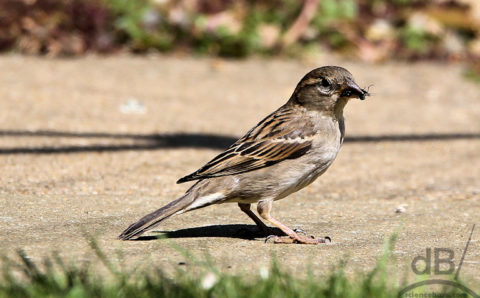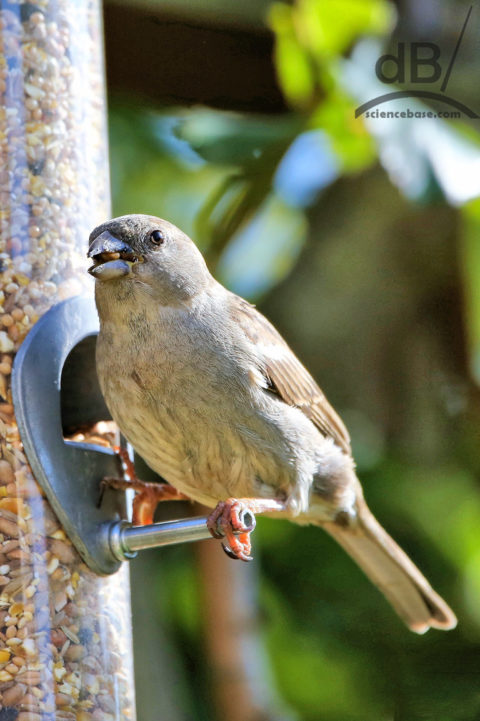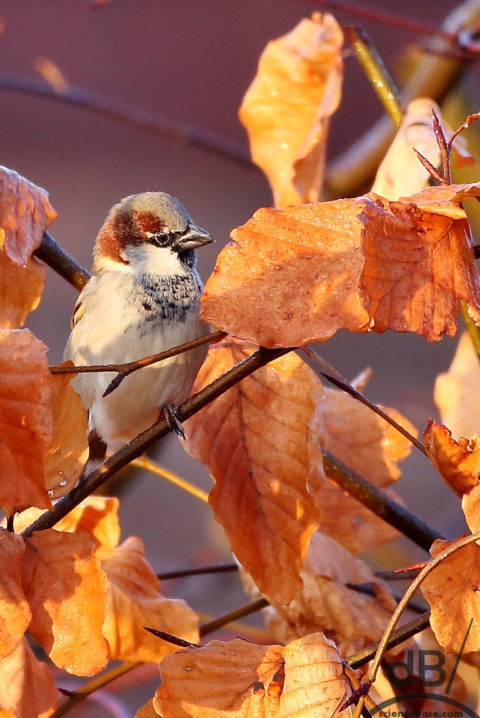The common or garden house sparrow (Passer domesticus) or in the parlance of my home town – the spuggy. Here pictured a female with a mouthful of insects plucked from our patio and readying herself to head back to the nest in a nearby shrubbery. The word sparrow derives from the Greek, spergoulos, which means “small field bird”, although that “g” is lost en route to English from Proto-Germanic sparwan (Old Norse spörr, Old High German sparo, German Sperling, Gothic sparwa) to Old English spearwa, so not sure how the Geordies kept it in their vernacular, spuggy (or spuggie). Mentioned frequently in the writings of Scott Dobson concerning the Geordie vernacular.

House sparrows are common and like other Passeridae family members considered to be LBJs, little brown jobs. The family split into the species we know today as recently as 25,000 to 15,000 years ago and their family tree, the taxonomy is quite complicated as such. To our eyes they may seem dull and brown, but the facial patterning of each is individual and allows them to recognise each other and to know who is who in the sparrow social heirarchy. Oh and just to prove that house sparrows are relatively omnivorous, here she is again on our seed-dispensing bird feeder (mixed seeds, including sunflower; never opts for the niger seeds, which are the favourite of the goldfinches).




